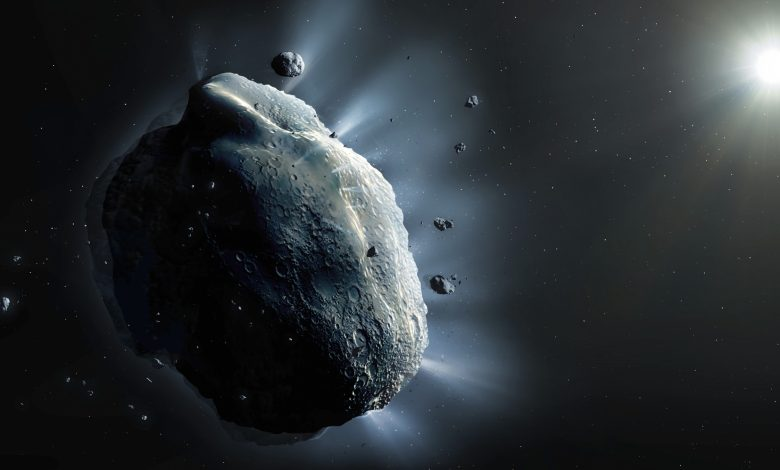Because of his strange behavior, the Japanese Space Agency launches a mission to the asteroid "Phaethon" near Earth
The Japanese Space Agency intends to launch its DESTINY + mission to the near-Earth asteroid “Phaethon” in 2024, with the aim of reaching the space rock in 2028.
To achieve this mission, this “dangerous” asteroid has been studied intensively. Scientists recently made an exciting discovery about Phaethon, which is the acceleration of its rotation.
The asteroid's rotation period decreases by 4 milliseconds per year. Even a small change like this could affect future DESTINY+ mission notes.
Knowing the specific rotation rate allows the team to more accurately predict the asteroid's orientation during the spacecraft's flyby, which in turn allows the team to be more specific in its observations.
It is rare for the asteroid's rotation to change, and "Phaethon" is the eleventh known asteroid, which shows a change in its rotation period.
Using data and observations from 1989 through 2021, Shawn Marshall, a planetary scientist at the Arecibo Observatory in Puerto Rico, created a model to determine the shape of Phaethon in preparation for the DESTINY+ mission.
Marshall found that the predictions from the model he made did not match the data, as the times when the model was brightest were out of sync with the times when Phaethon was actually observed to be brightest.
He continued: “I realized that this could be explained by changing the period of Phaethon’s rotation slightly sometime before the 2021 observations.”
Marshall decided that the model that best fit the data involved a constant acceleration of rotation. In other words, it includes the regular decline in Phaethon's rotation period of 4 milliseconds per year.
"This is good news for the DESTINY+ team, because the constant change means that the direction of Phaethon at the time of the spacecraft's flyby can be accurately predicted, so they will know which areas the Sun will illuminate," Marshall said.
Scientists are still learning about Phaethon, and the DESTINY+ mission will surely reveal more.
It is noteworthy that “Phaethon” is large enough, and close enough to Earth, to be called a “potentially dangerous asteroid”, although in reality it does not pose a direct threat to our planet.
Although it does not currently pose any danger to Earth, any small change in the asteroid's path, which is about 5.8 km (3.6 miles) wide, could bring it close enough to a sufficient change in its 524-day orbit, which could It is prompting scientists to rethink their concerns about it.
The scientists presented the findings at the 54th annual meeting of the American Astronomical Society's Division of Planetary Sciences in London, Ontario, earlier this month.
source:Websites




